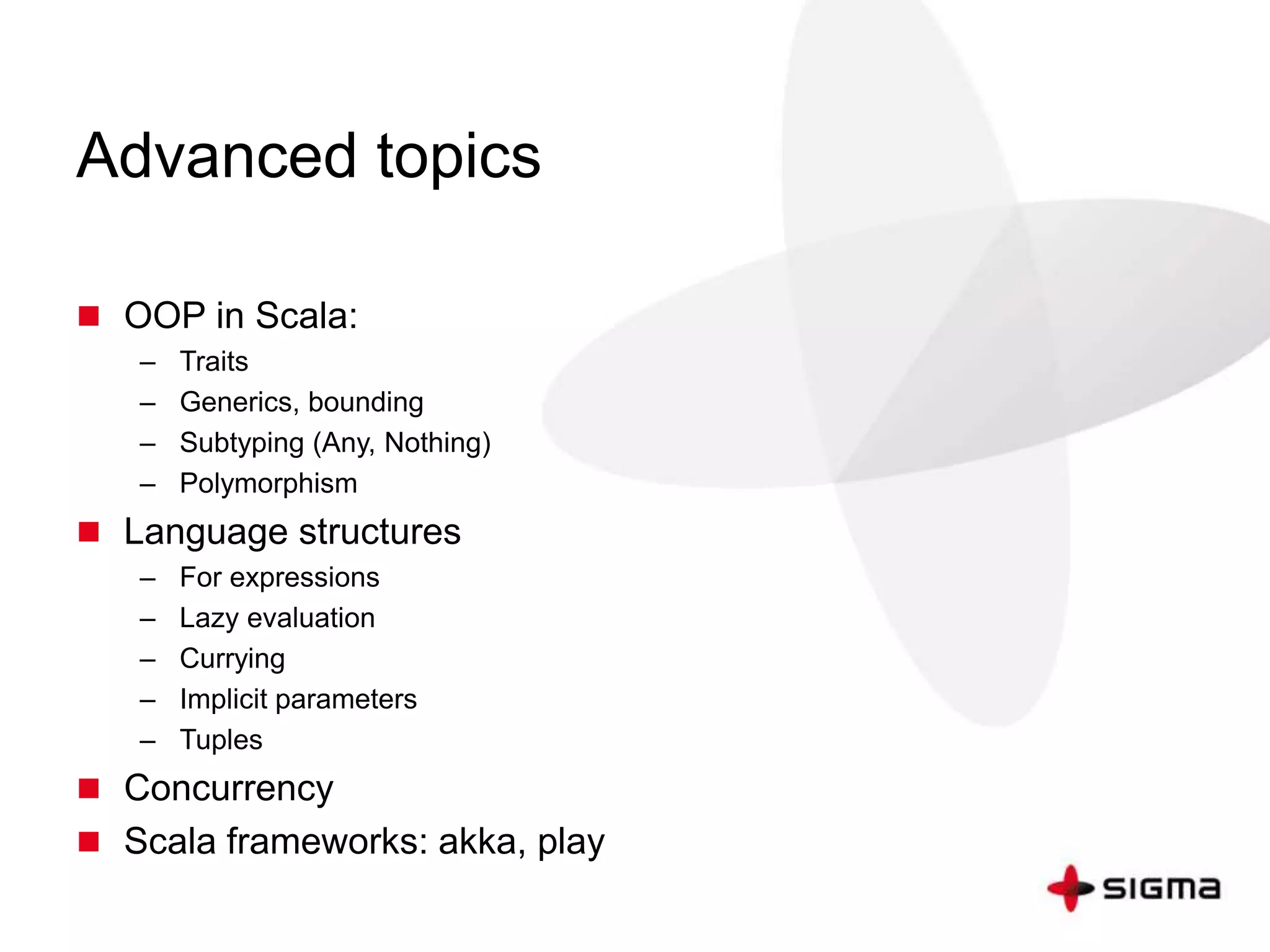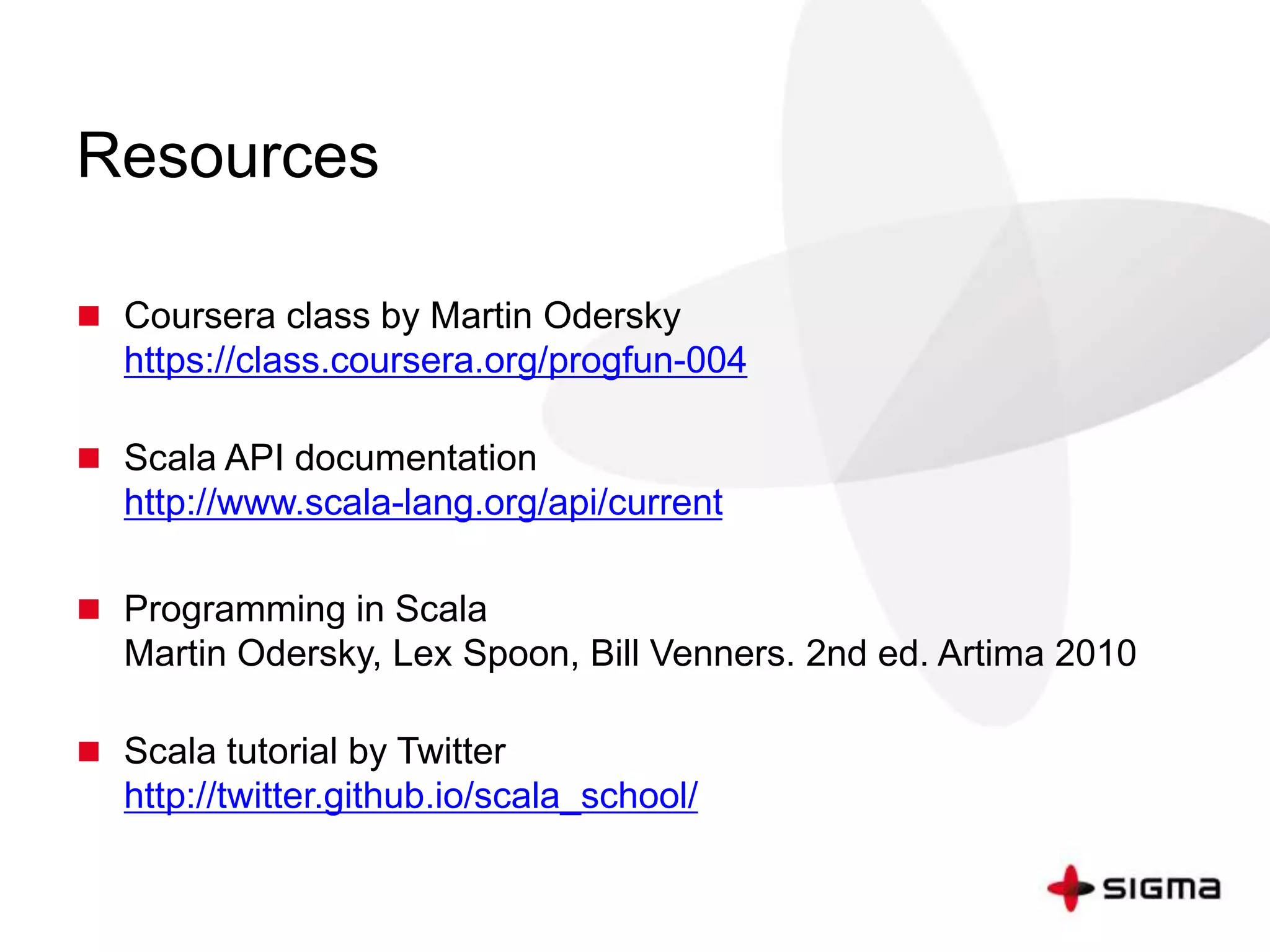This document outlines an introduction to Scala, including its motivation, syntax, features like case classes and tail recursion, and examples of implementing functional programming concepts. It covers Scala's support for both imperative and functional paradigms, and describes how to work with collections and some advanced topics.

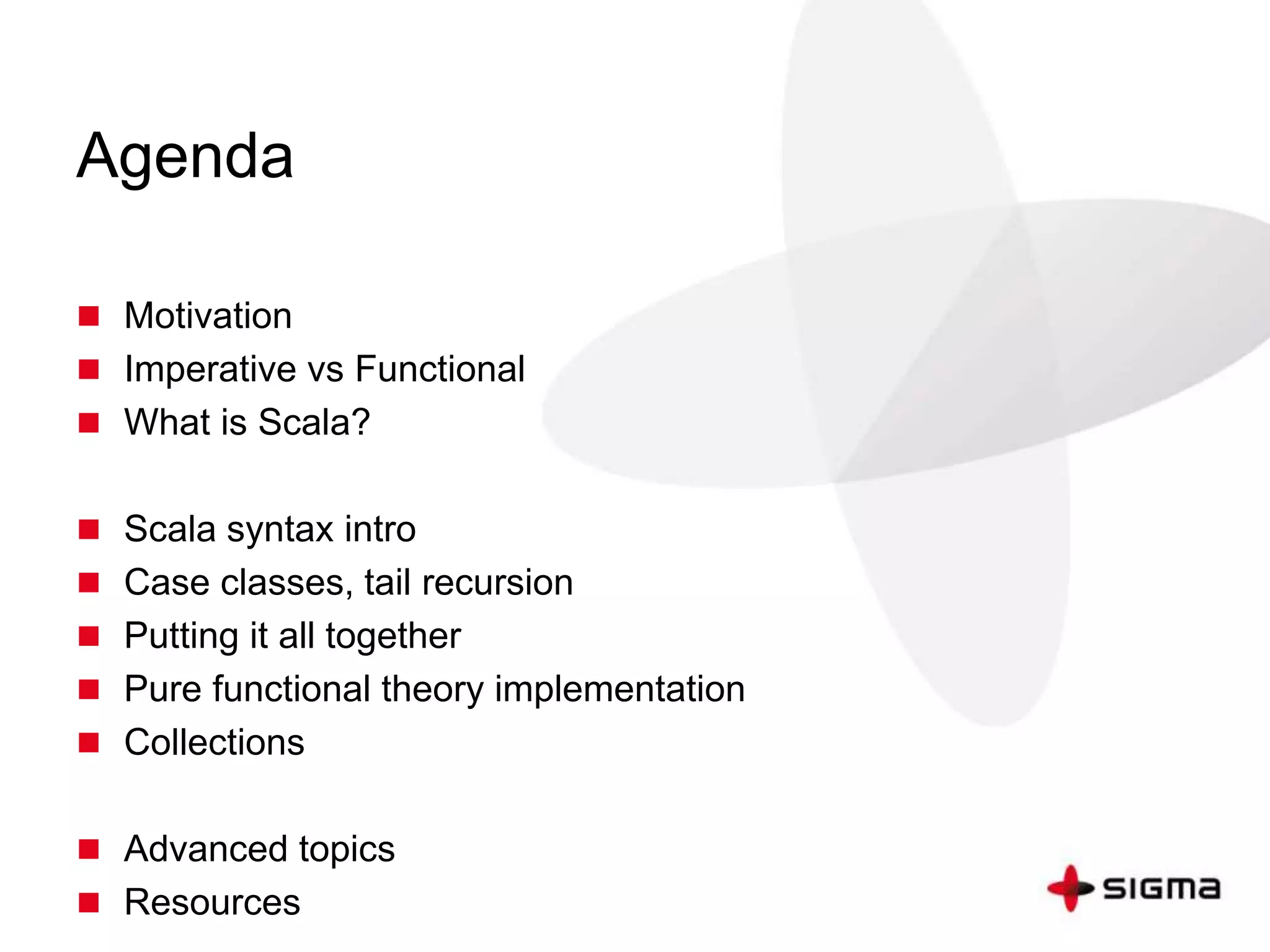
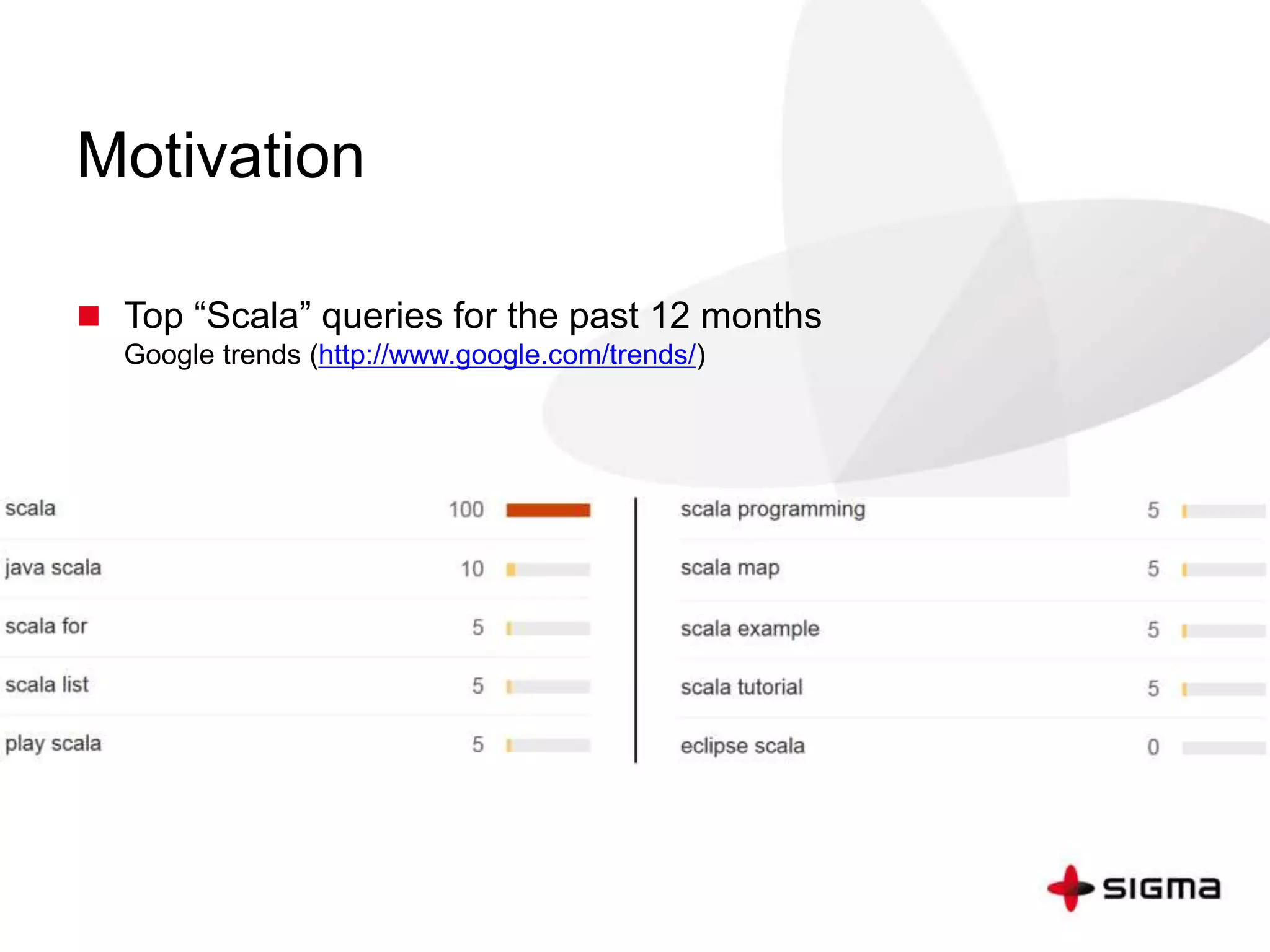
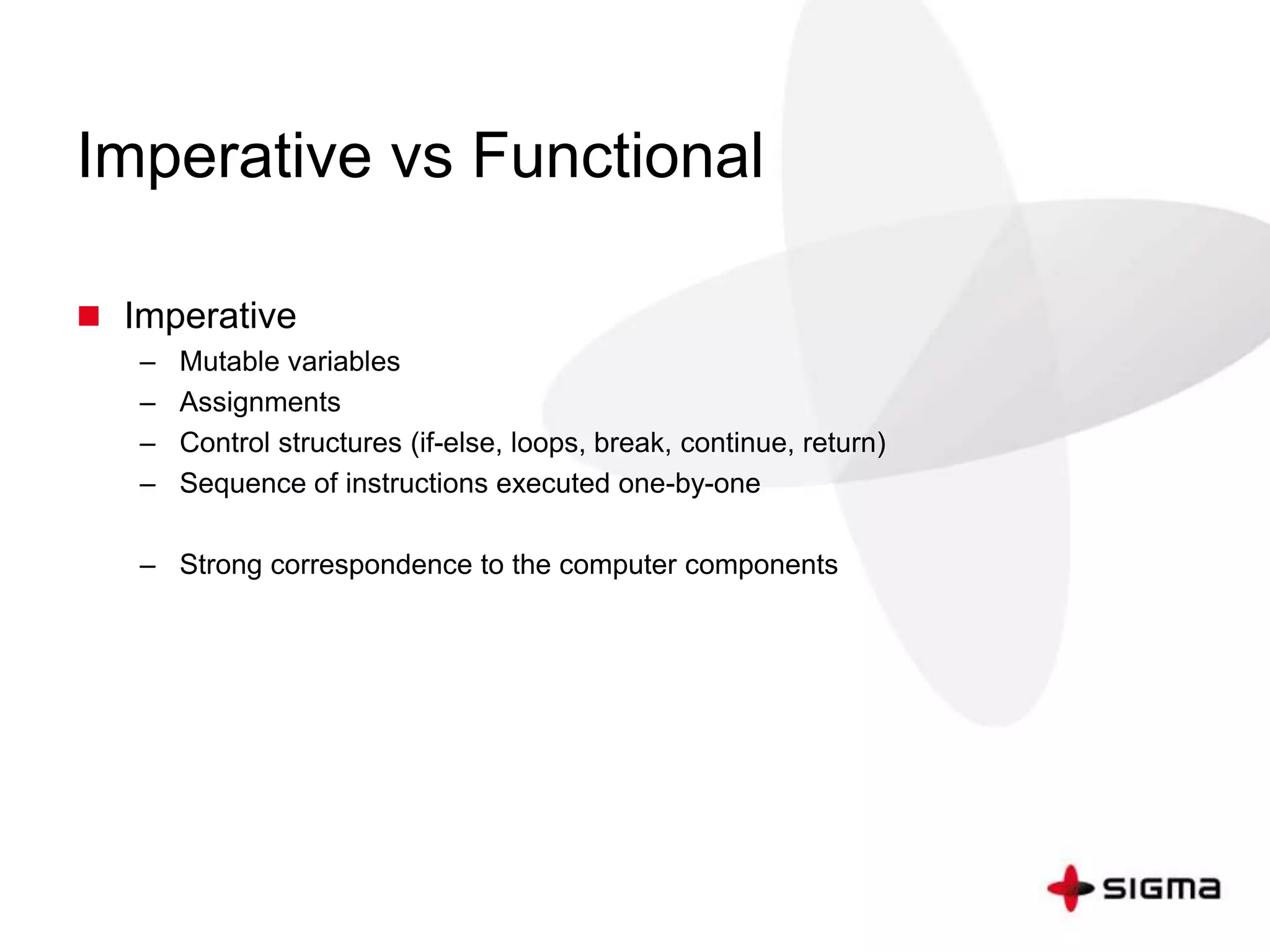
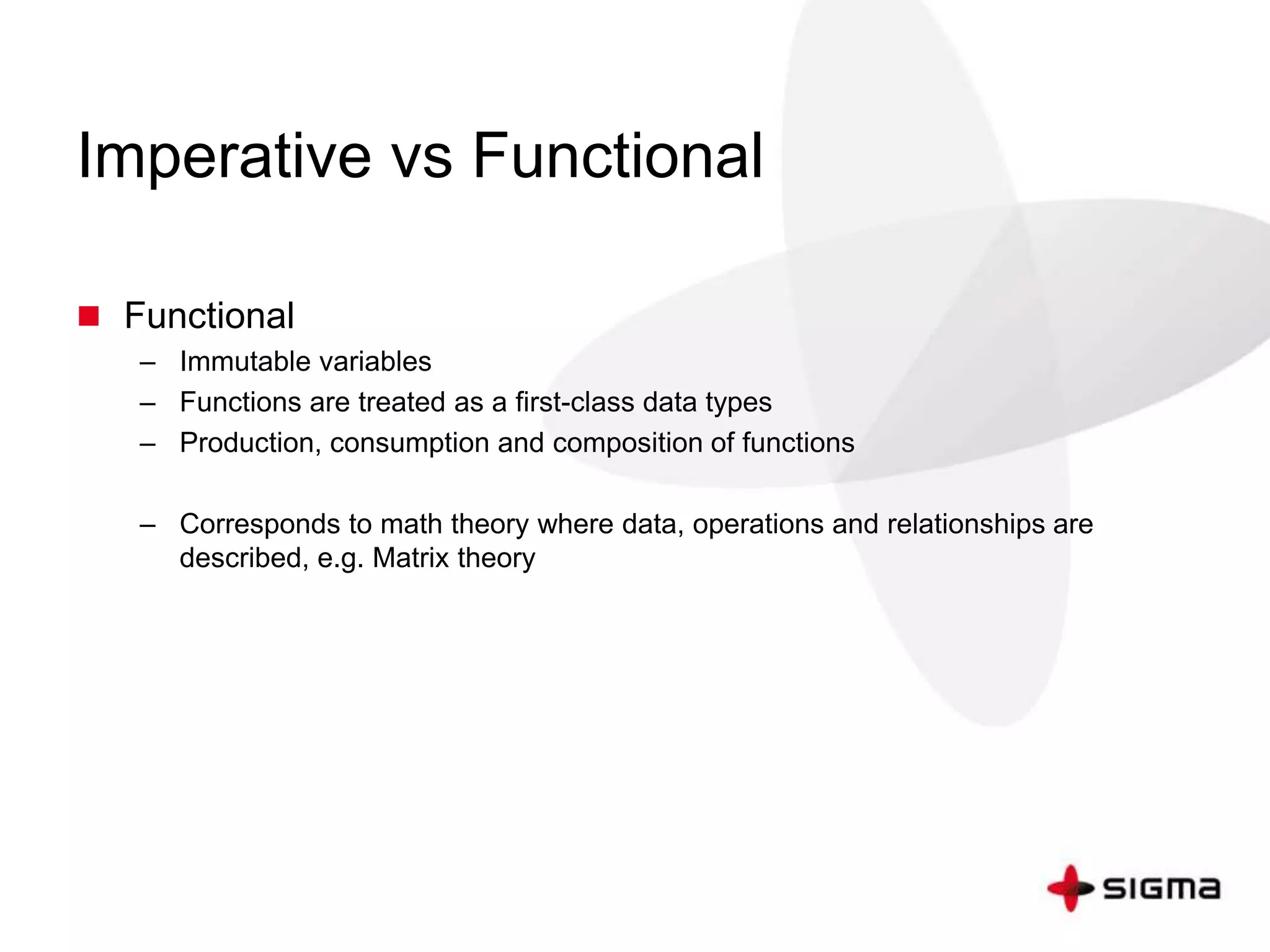
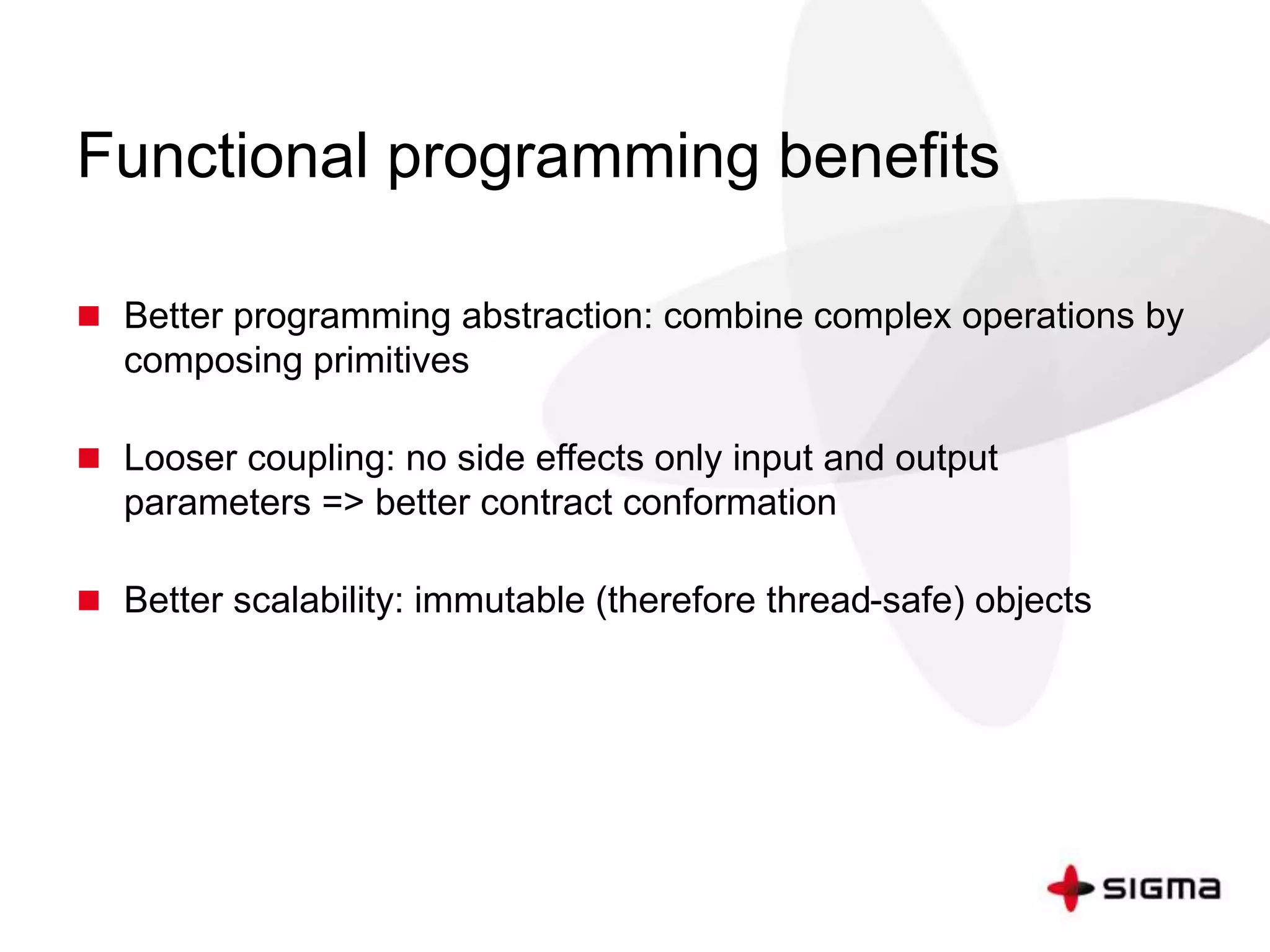
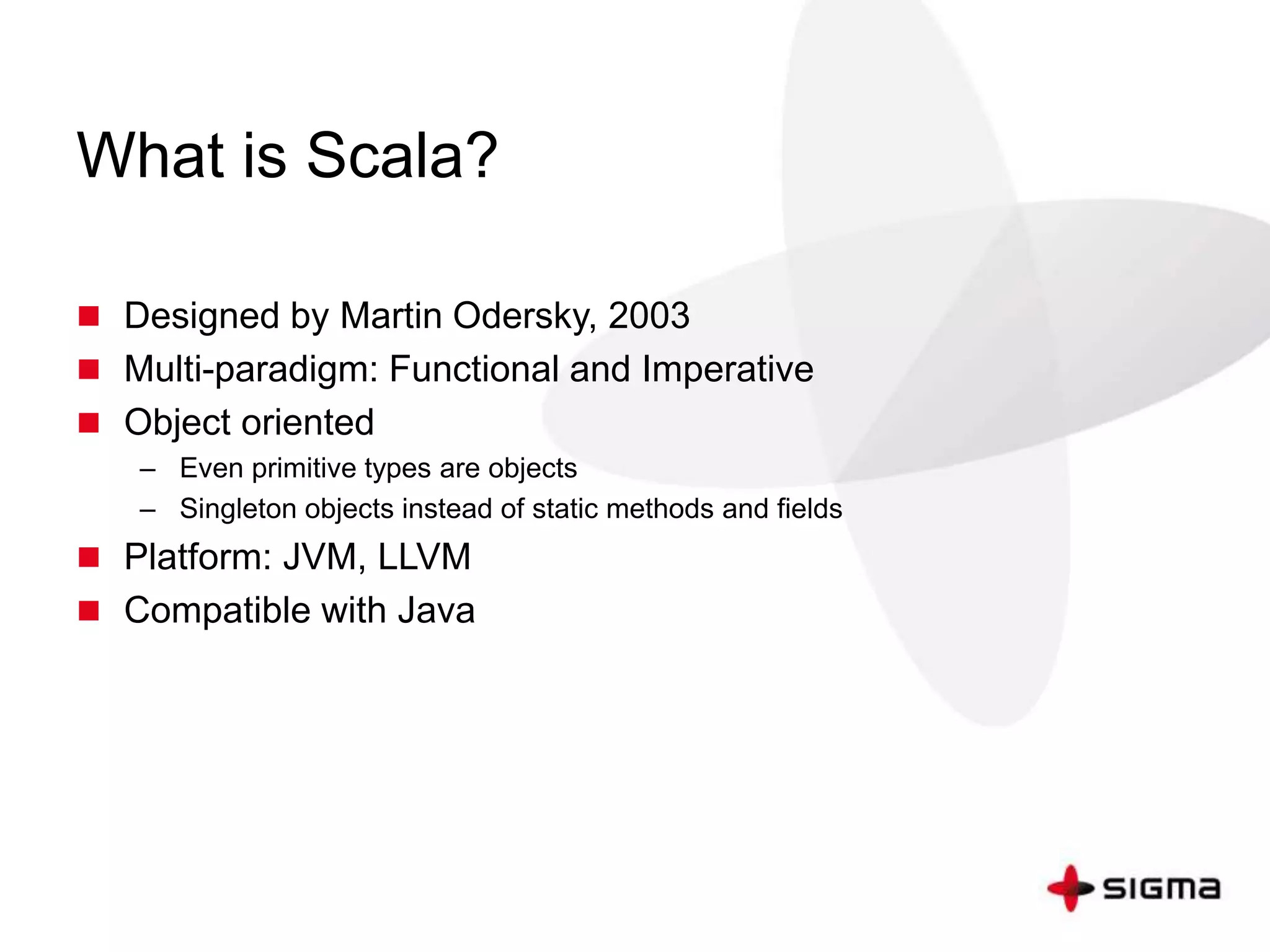
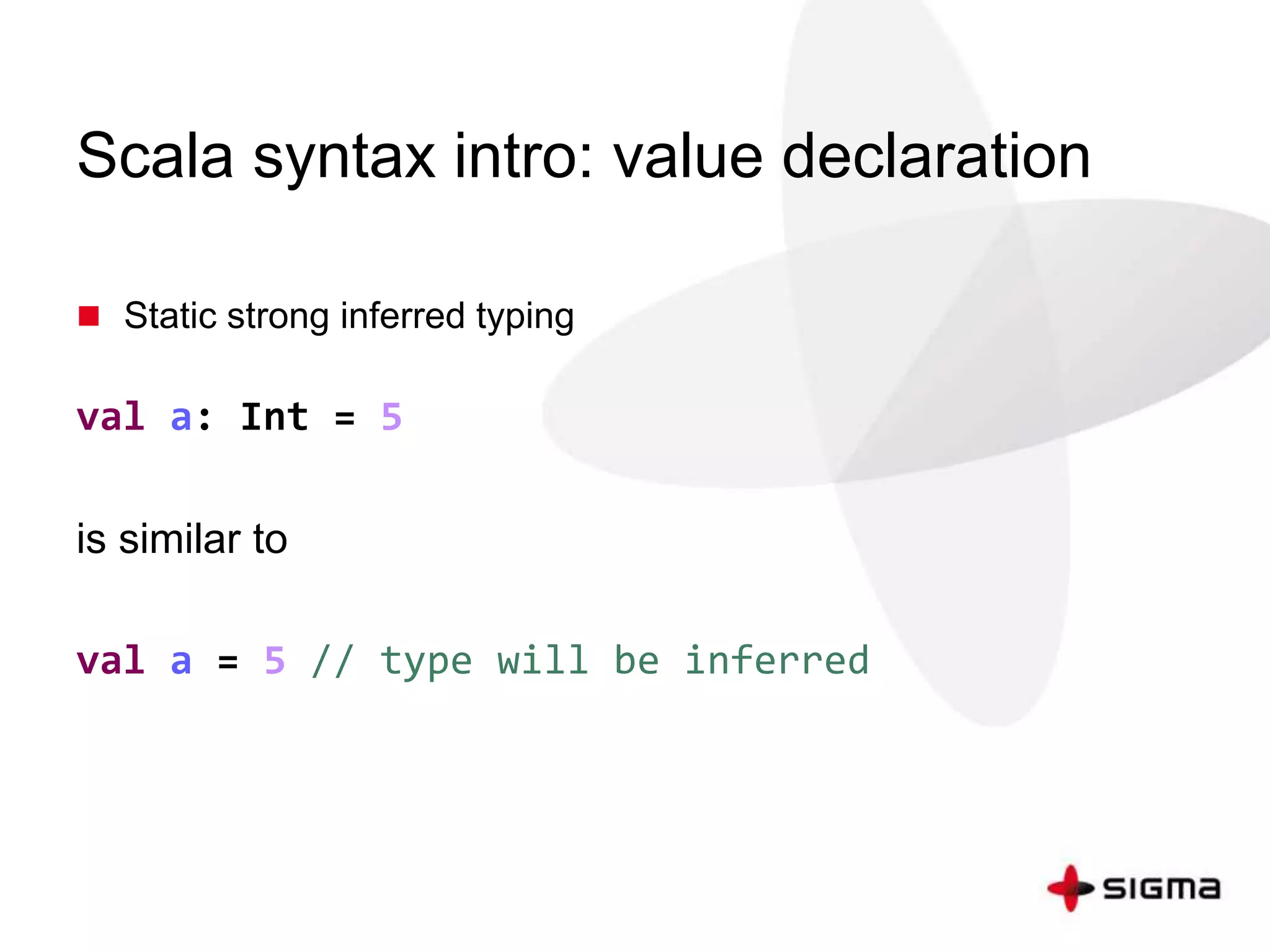
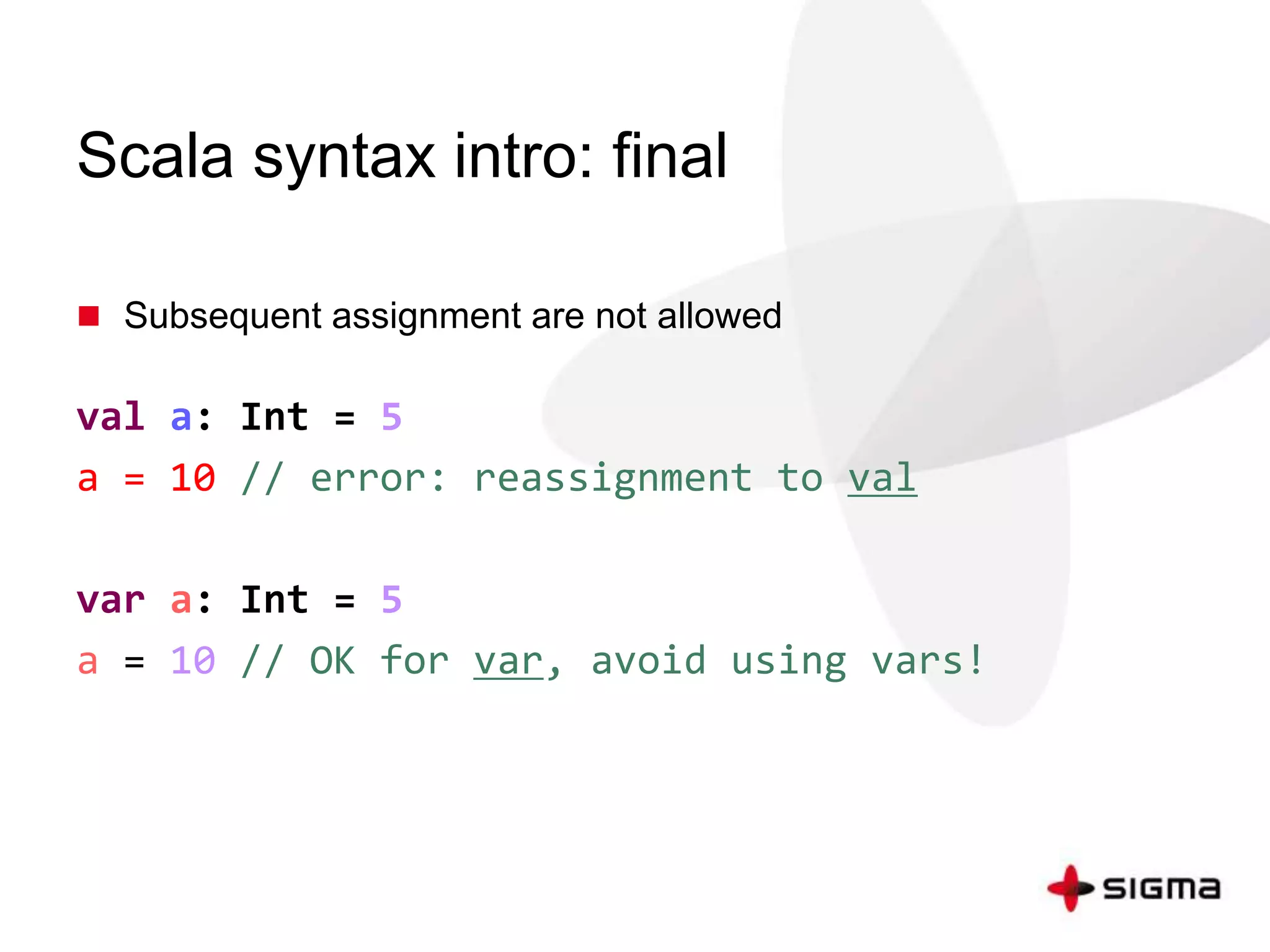
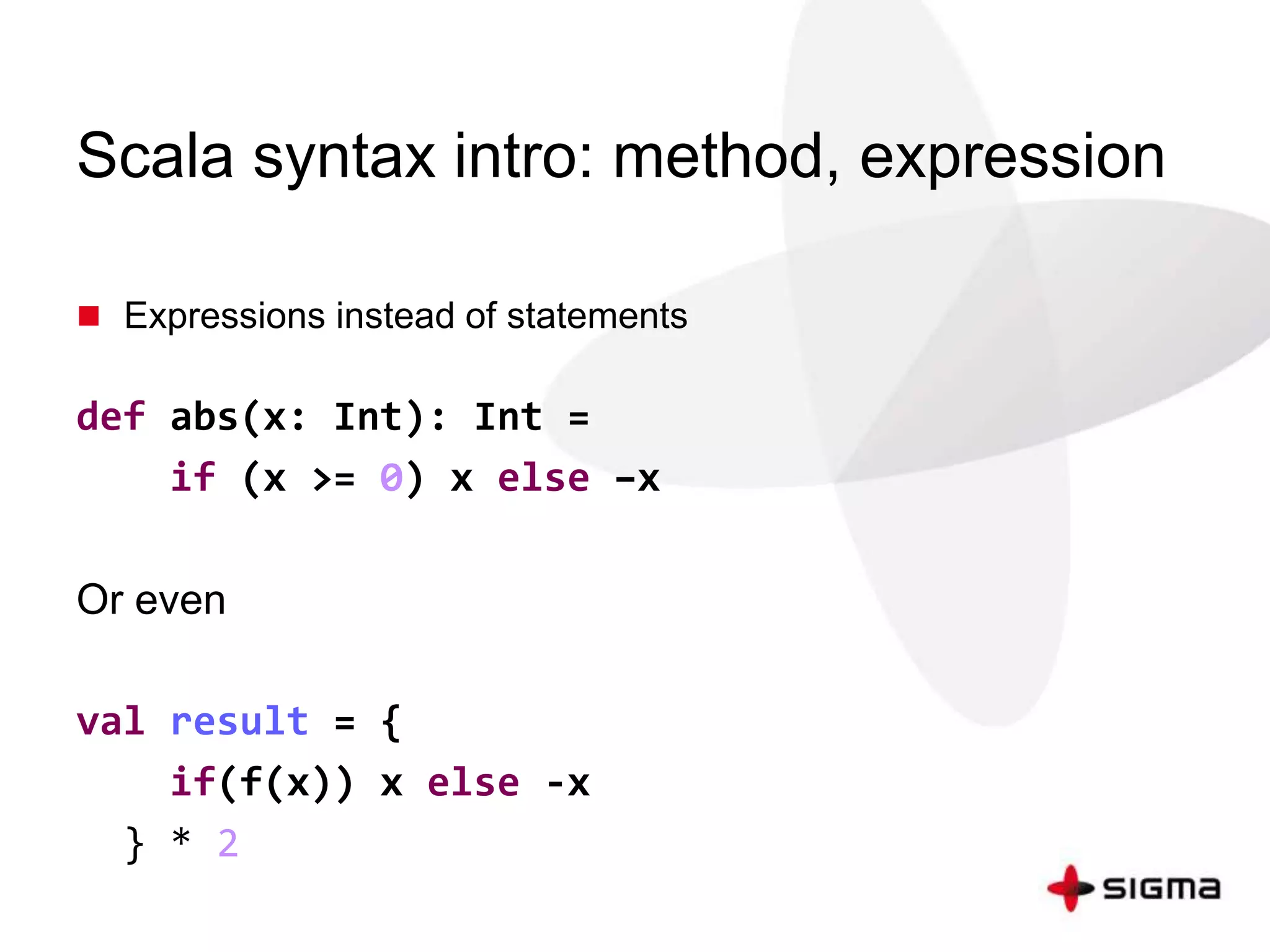
![Scala syntax intro: high-order functions
Functions might be passed as parameters
def map(xs: List[Int],
m: Int => Int): List[Int] =
if(xs.isEmpty) List()
else List(m(xs.head)) ++ map(xs.tail, m)
// pass function as a parameter
def square(x: Int) = x * x
map(List(1, 2, 3), square)
map(List(1, 2, 3), x => x * x)](https://image.slidesharecdn.com/nosovskyscalaintroduction-140828122655-phpapp02/75/Scala-Introduction-11-2048.jpg)
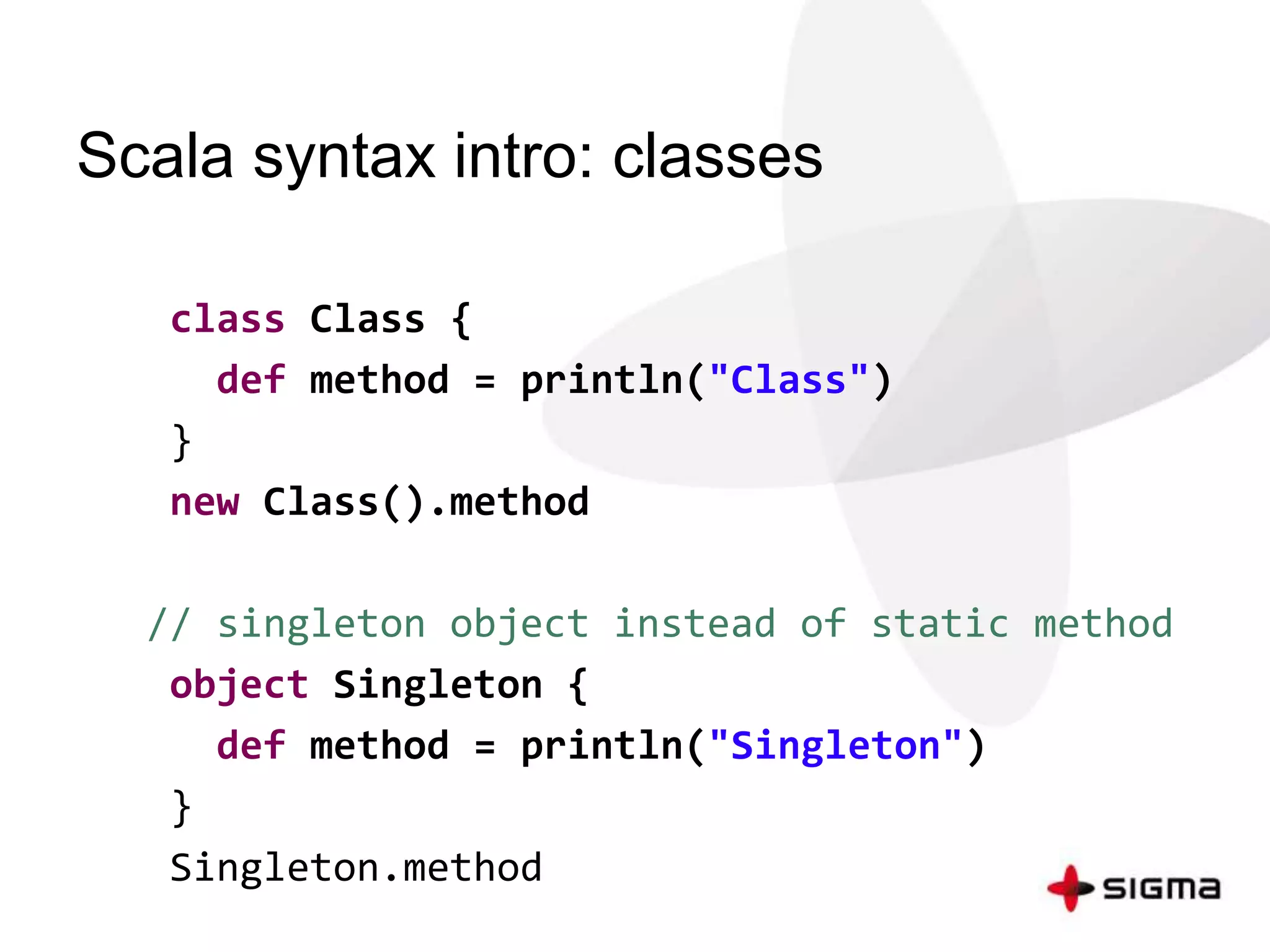
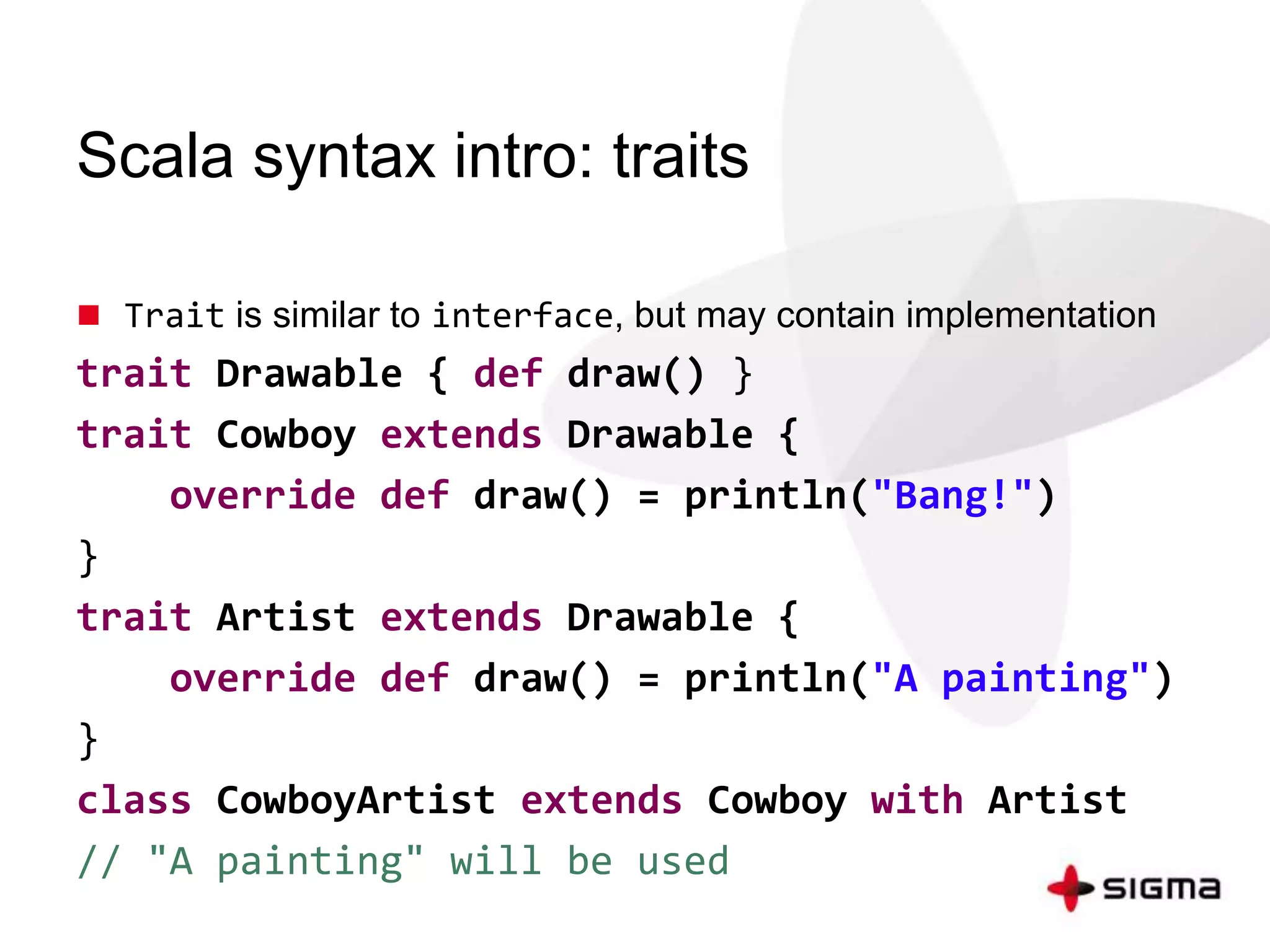
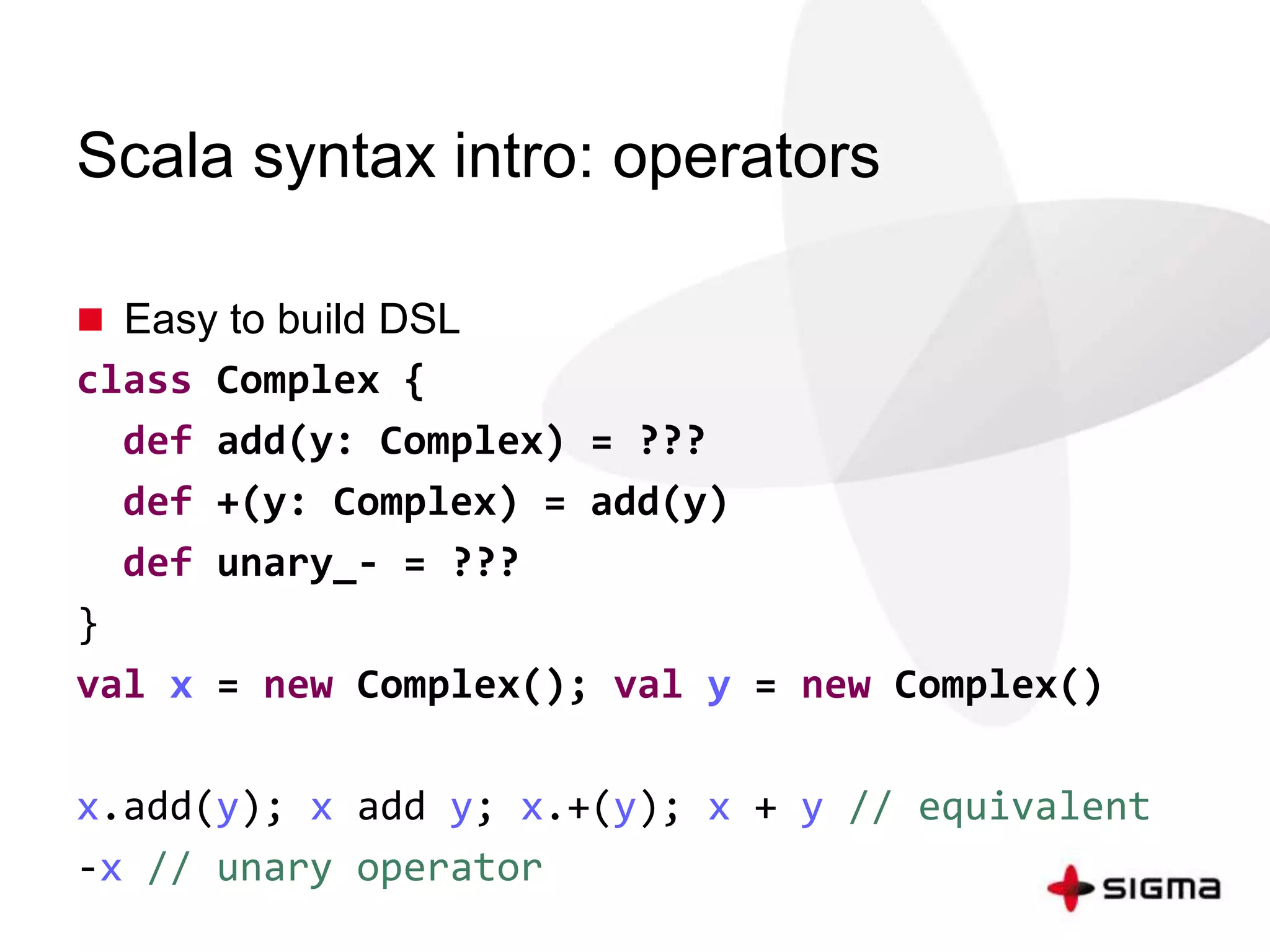
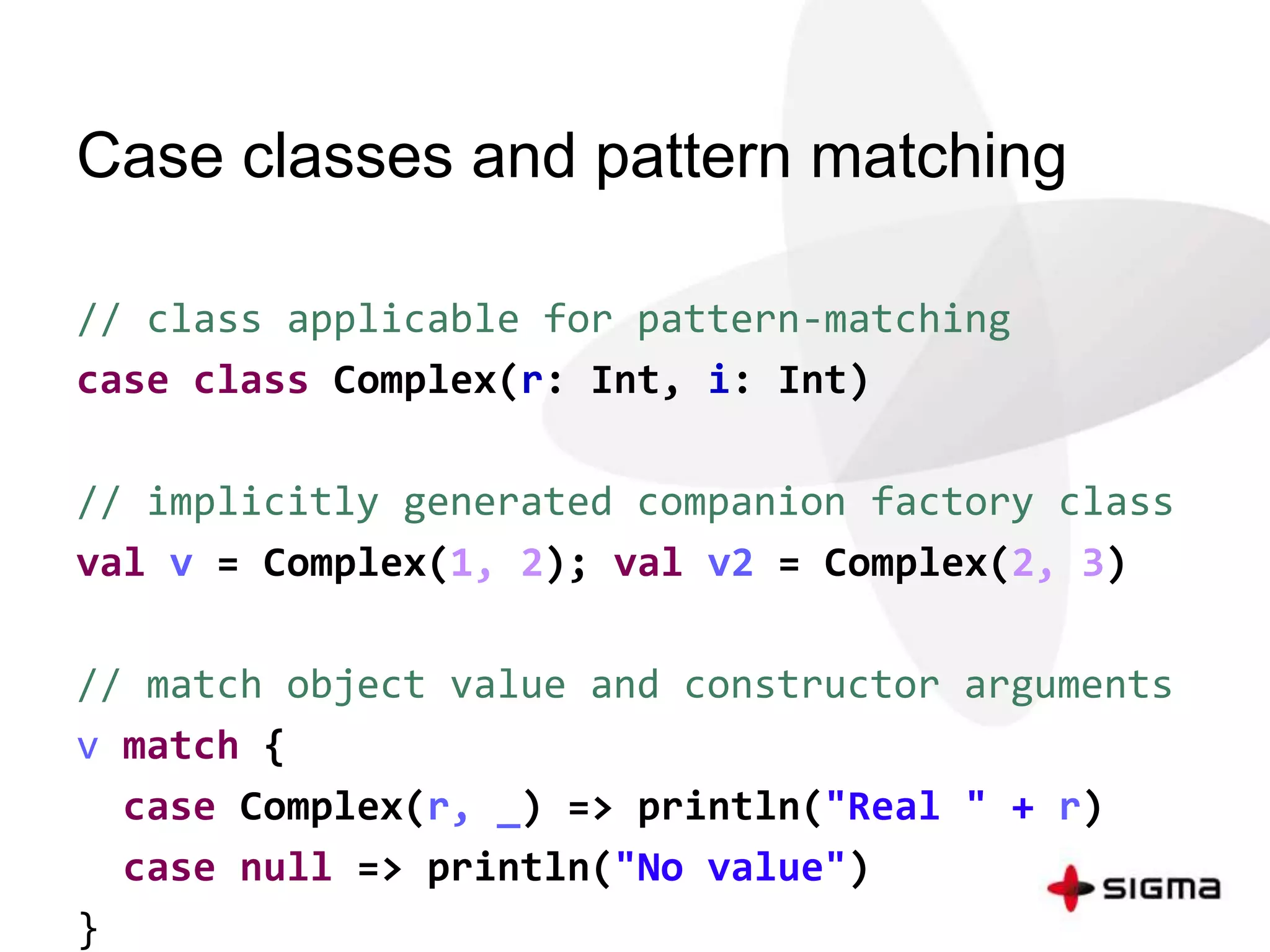
![Recursion
Recursion is often used for list processing
def sum(xs: List[Int]): Int =
if(xs.isEmpty) 0
else xs.head + sum(xs.tail)
Problem: list of 1 million elements causes stack overflow](https://image.slidesharecdn.com/nosovskyscalaintroduction-140828122655-phpapp02/75/Scala-Introduction-16-2048.jpg)
![Tail recursion
If a function calls itself as its last action, the function’s stack
frame can be reused
def sum(xs: List[Int]): Int = {
// will be compiled to a loop in byte code
@tailrec
def loop(acc: Int, xs: List[Int]): Int =
if(xs.isEmpty) 0
else loop(acc + xs.head, xs.tail)
loop(0, xs)
}](https://image.slidesharecdn.com/nosovskyscalaintroduction-140828122655-phpapp02/75/Scala-Introduction-17-2048.jpg)
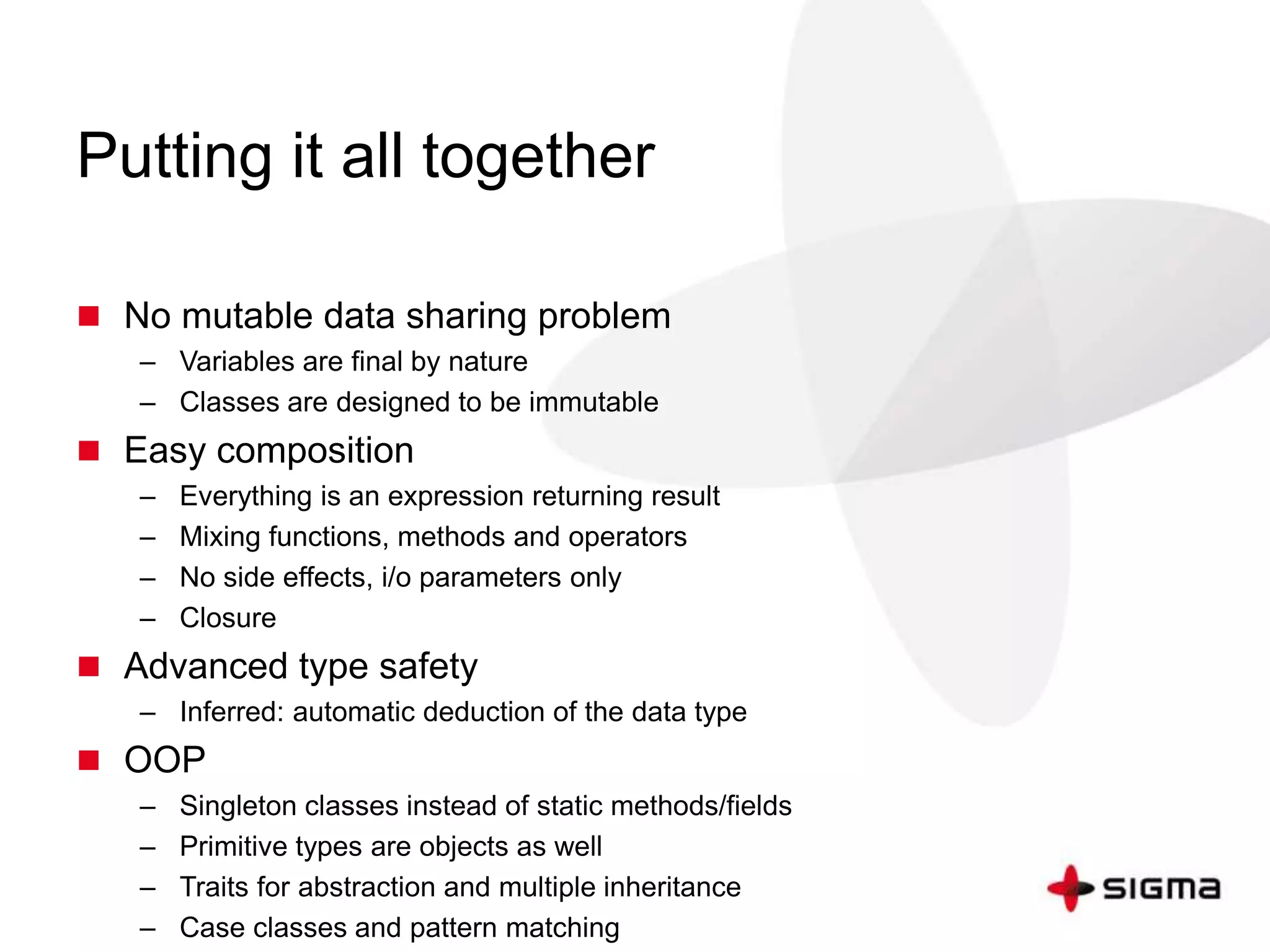
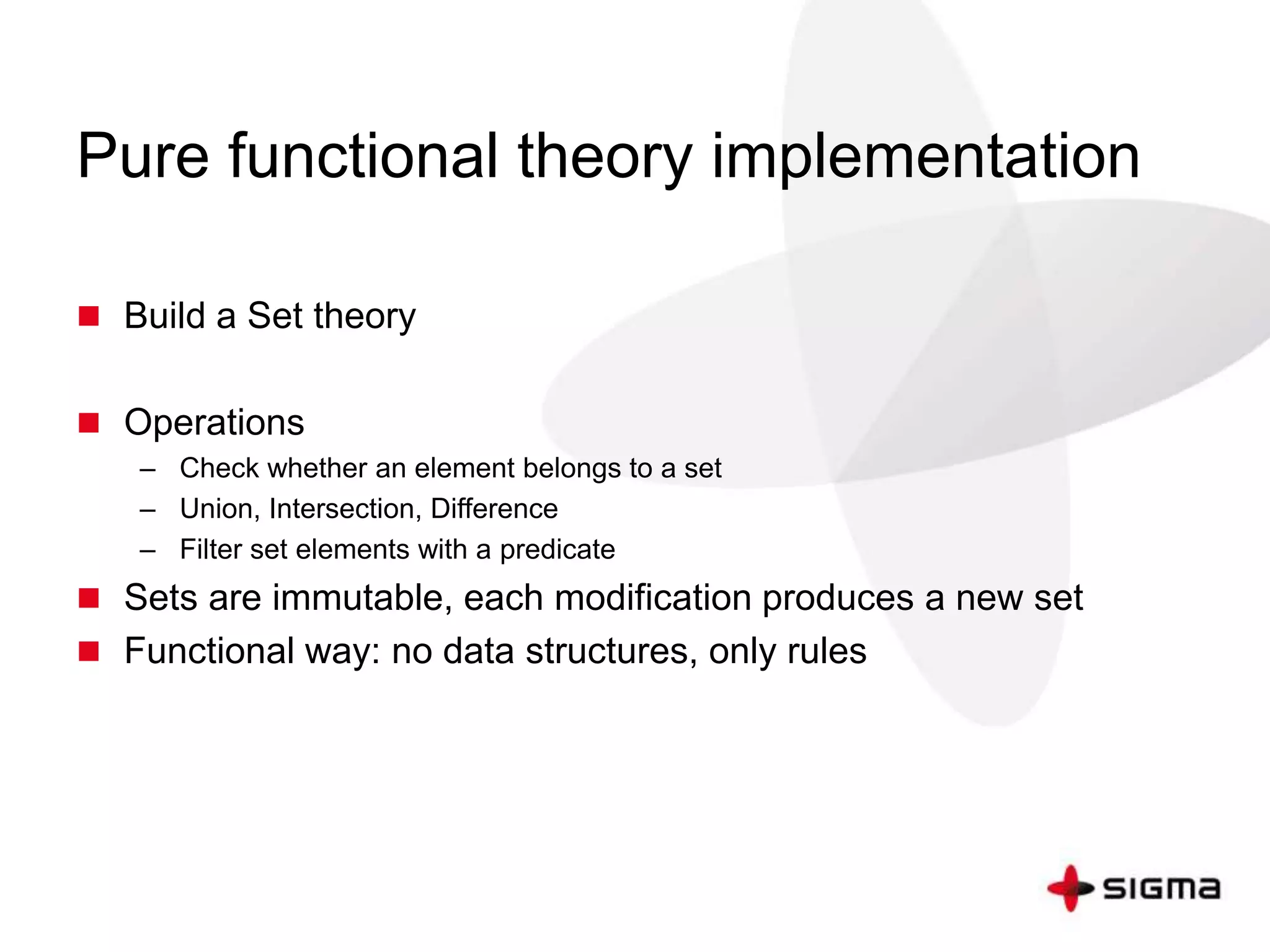
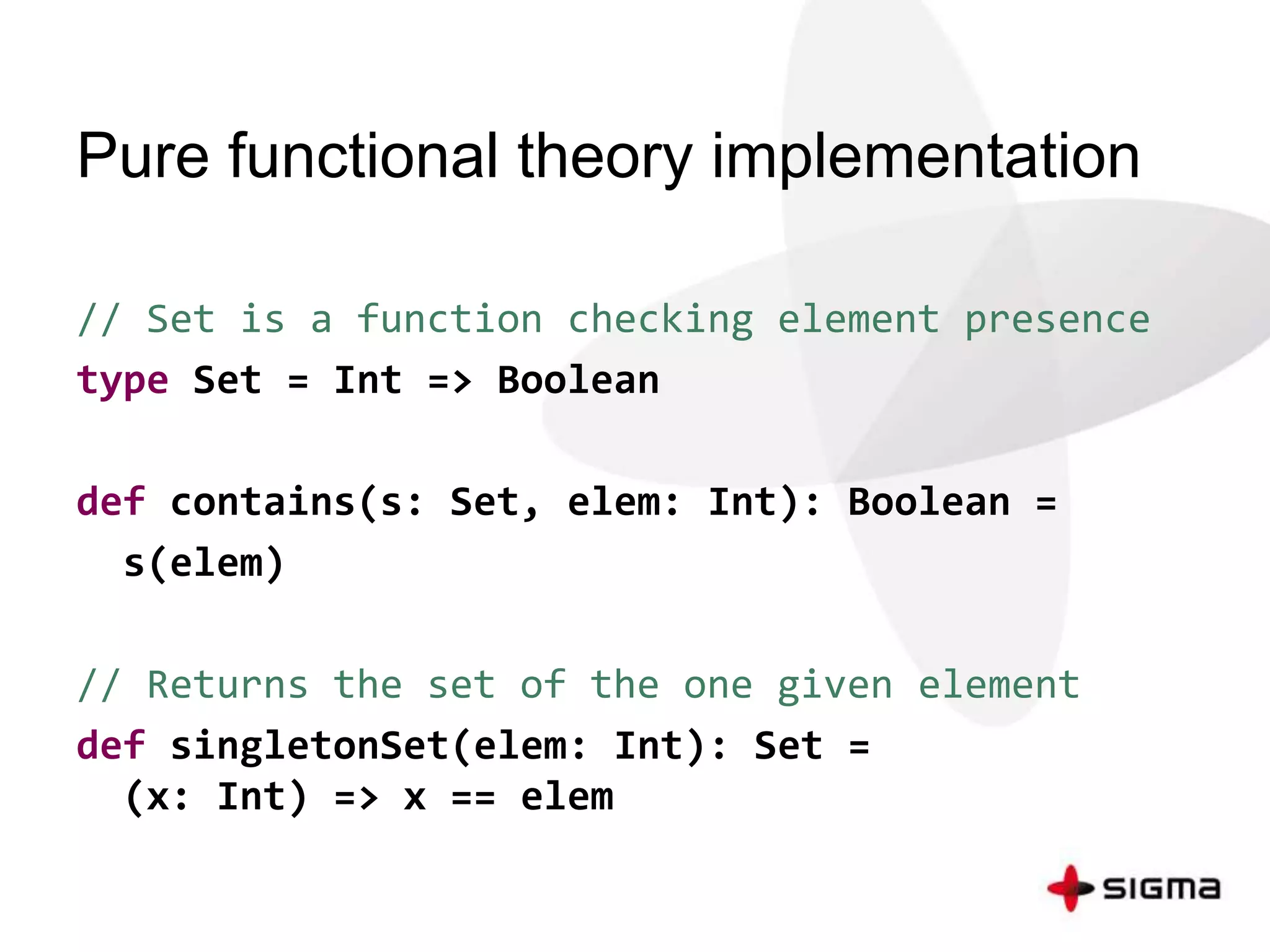
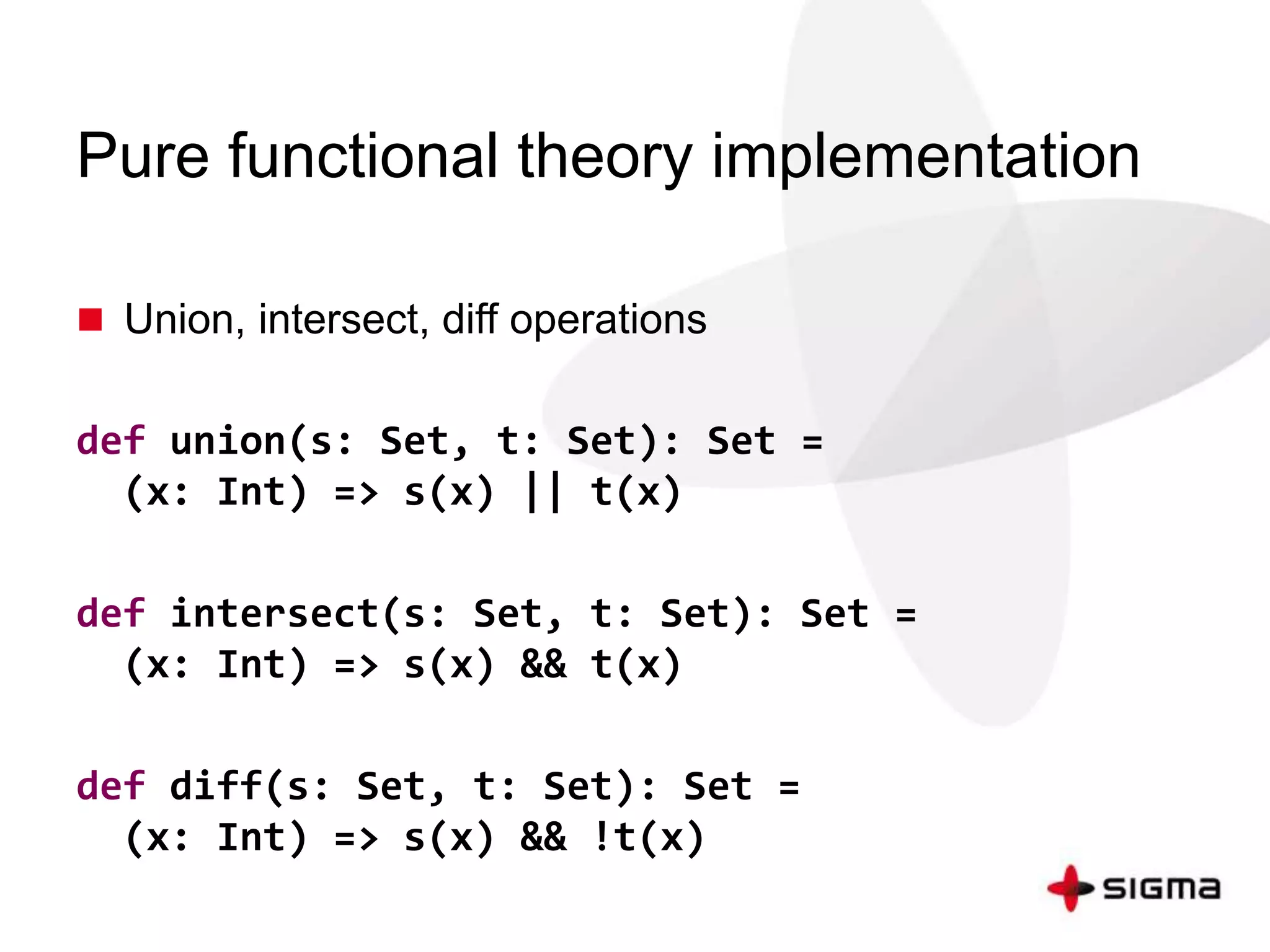
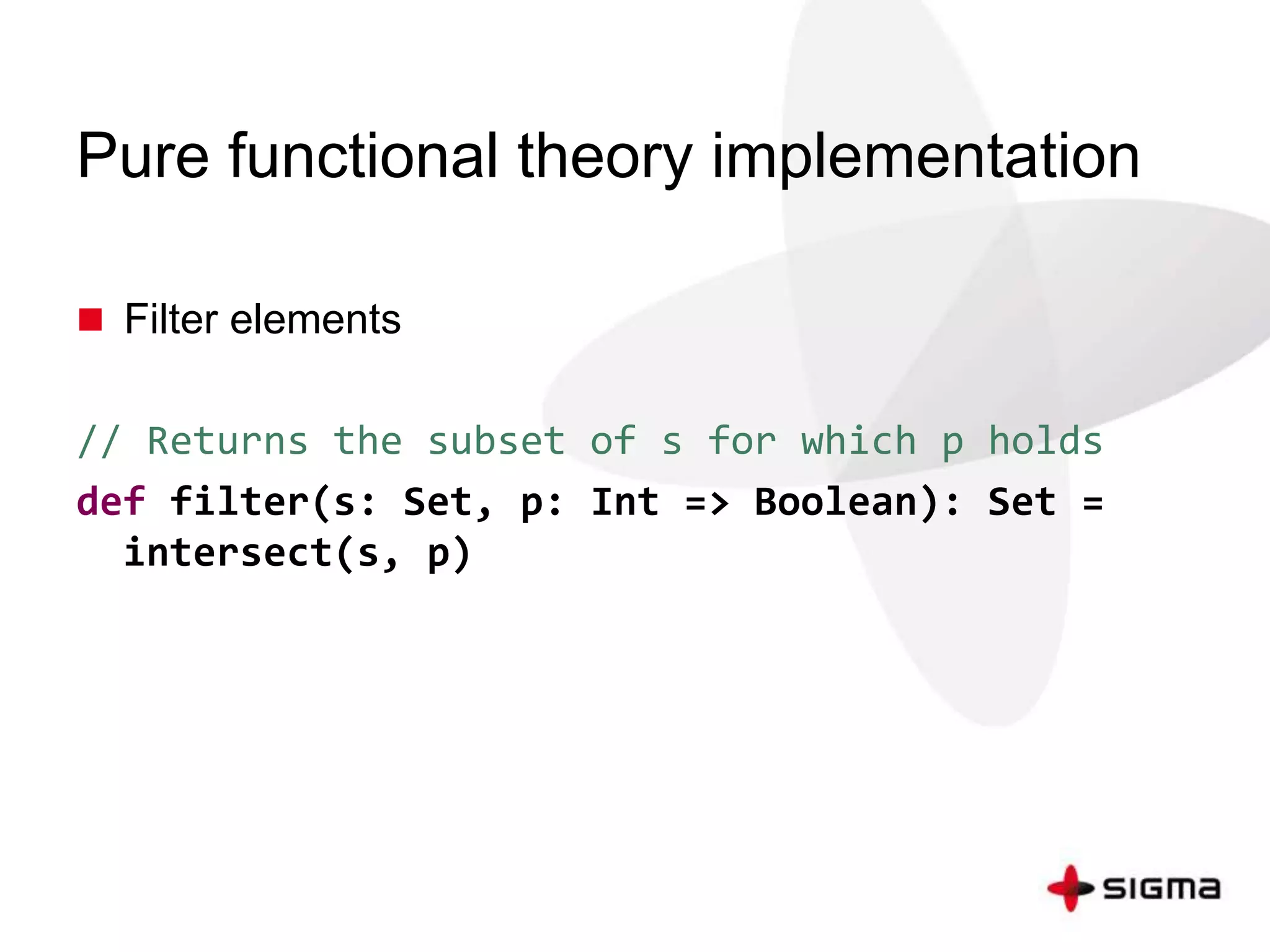
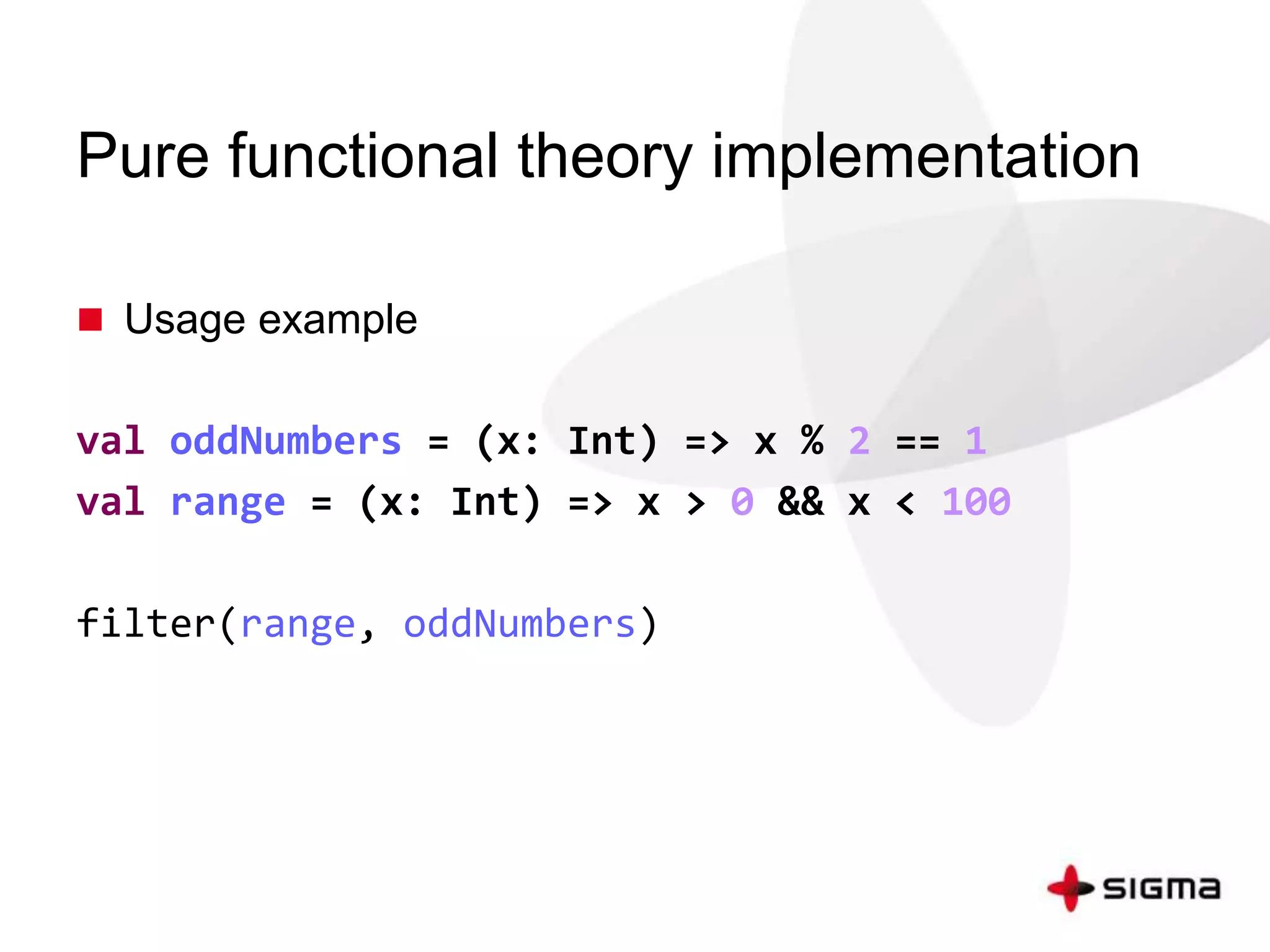
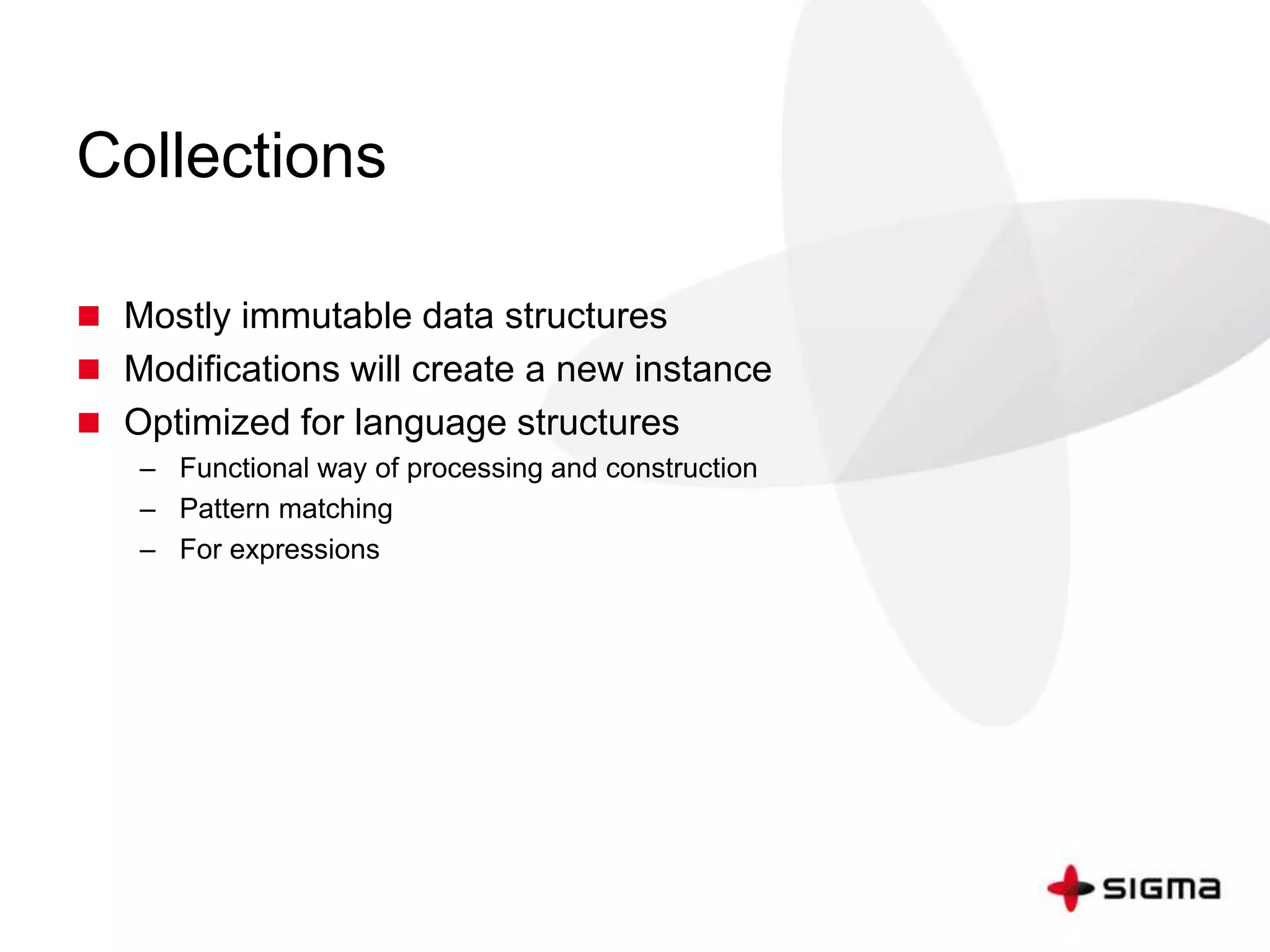
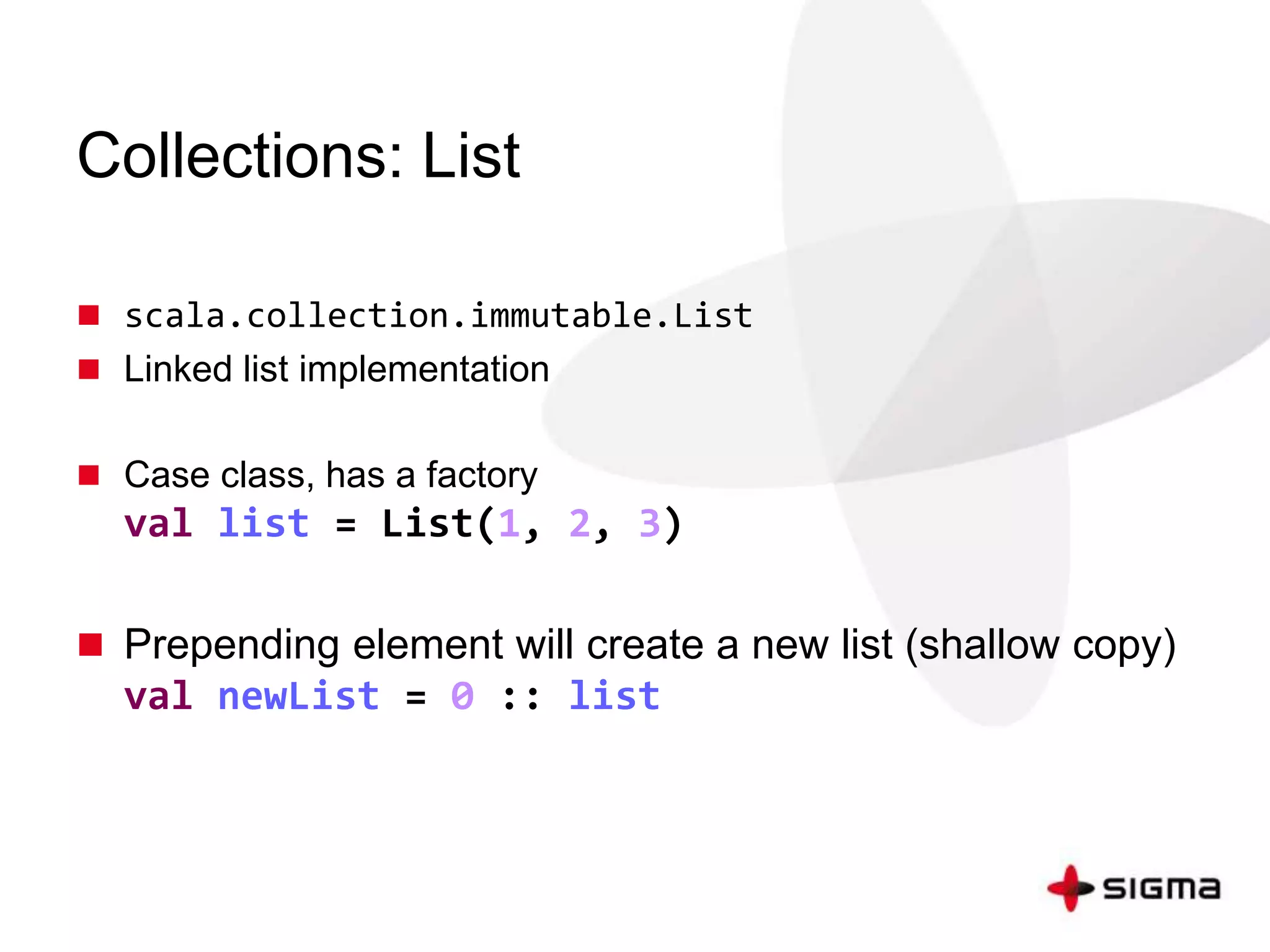
![Collections: List
Methods head and tail used for one by one processing
def contains(l: List[Int], e: Int): Boolean =
if(l.isEmpty) false
else l.head == e || contains(l.tail, e)
Applicable for pattern matching
def contains(l: List[Int], e: Int): Boolean =
l match {
case List() => false
case head :: tail =>
head == e || contains(tail, e)
}](https://image.slidesharecdn.com/nosovskyscalaintroduction-140828122655-phpapp02/75/Scala-Introduction-26-2048.jpg)
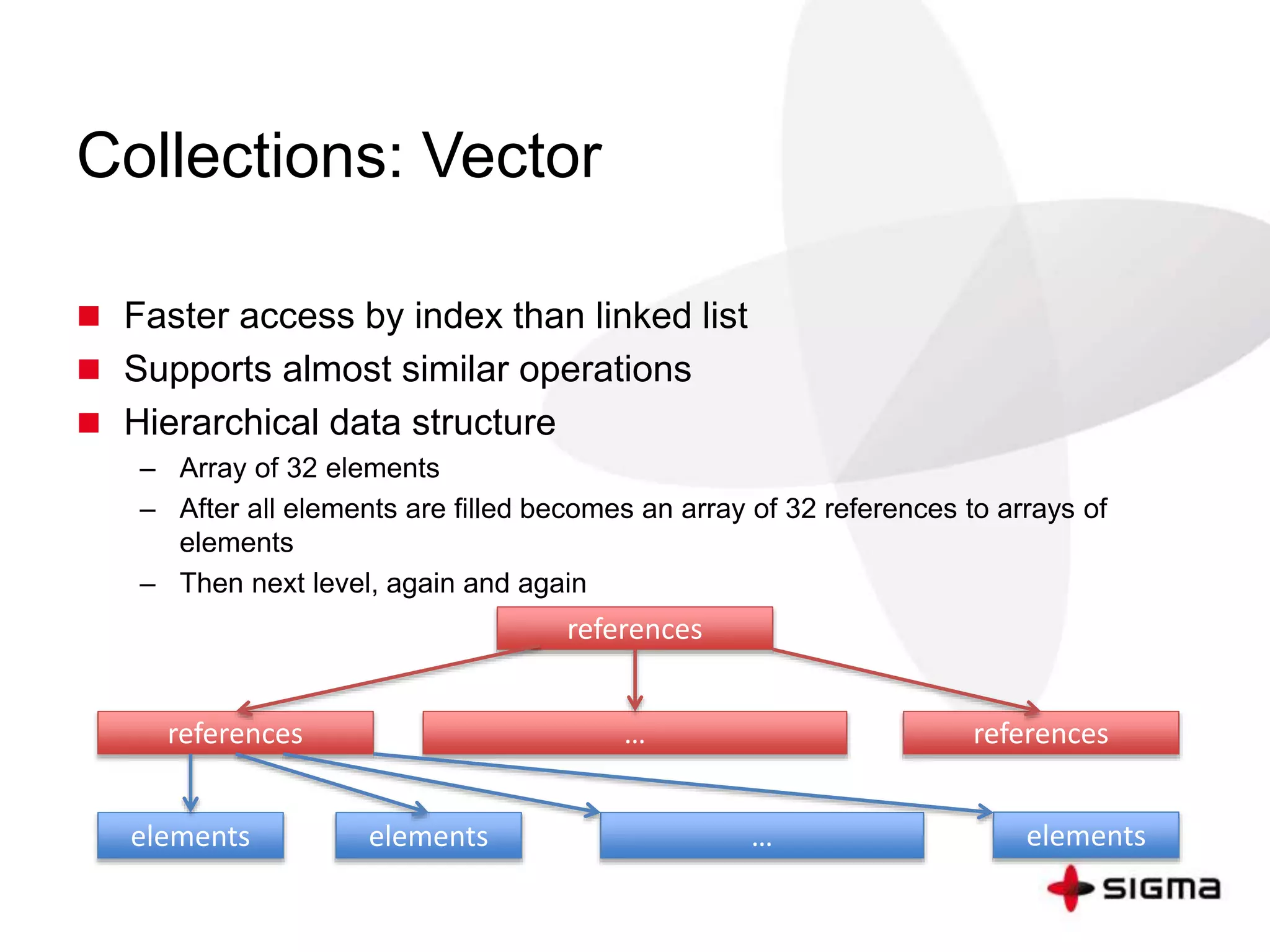
![Collections: common methods
exists, forall – contains by predicate
zip, unzip – transform two collection into a single one
chaining corresponding items into a tuple
map, flatMap – apply transformation to each element
to[List, Map, Set, Stream]
sum, product, max, min](https://image.slidesharecdn.com/nosovskyscalaintroduction-140828122655-phpapp02/75/Scala-Introduction-28-2048.jpg)
